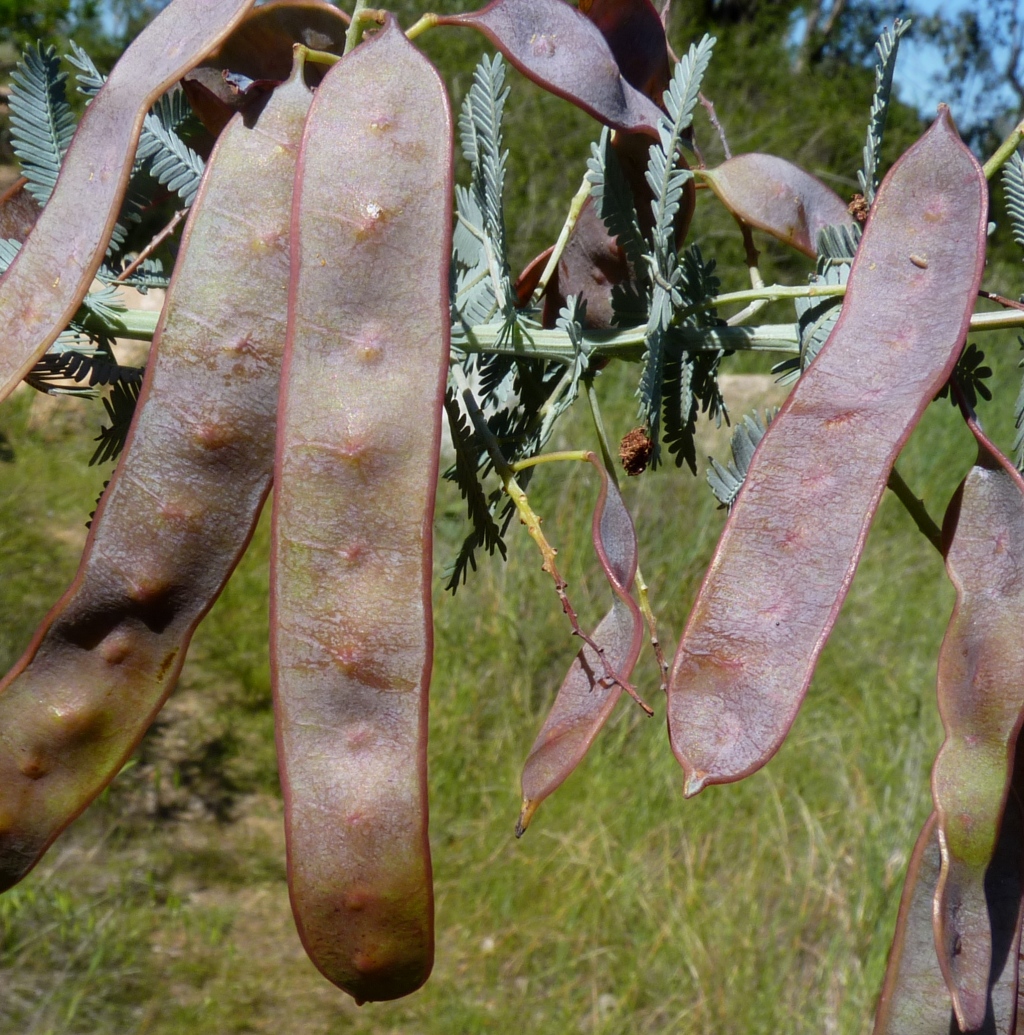Acacia baileyana
F.Muell. Cootamundra WattleSmall tree or sometimes shrub, to 6 m high; bark smooth and brown; branchlets slightly angled and furrowed, with waxy bloom, sometimes hairy. Leaves bipinnate, silvery-blue, glaucous; rachis 1–4 cm long, with a raised gland at the junction of usually the top few pinnae pairs; pinnae in 2–6 pairs, crowded; pinnules in 12–20 pairs, crowded, linear-oblong, mostly 5–7 mm long, 1–1.5 mm wide, shorter towards ends of pinnae, usually glabrous but sometimes with a few marginal hairs, apex acuminate. Inflorescence a raceme; heads globular, 20–25-flowered, bright yellow; peduncles 4–7 mm long. Pod straight or slightly curved, flattish, 4–11 cm long, 8–14 mm wide, irregularly constricted, brown to black, sometimes with waxy or whitish bloom. Flowers Jun.–Sep.
LoM, Wim, GleP, VVP, VRiv, RobP, MuF, GipP, OtP, WaP, Gold, CVU, GGr, DunT, NIS, EGL, EGU, HSF, HNF, OtR, Strz. Also naturalised WA, SA, Qld, NSW (native and naturalised), ACT. Native to the Cootamundra-Wagga Wagga area of New South Wales. Commonly cultivated and now widely naturalised in all mainland states except Northern Territory. Common in dryish woodland and open-forests, usually on poor shallow soils.
Purple-leaved sports, favoured in horticulture, may also occur in naturalised populations.
Naturalised populations of Acacia baileyana are known to sometimes hybridise with A. dealbata producing plants with leaves intermediate between the two parent species. It also hybridises with naturalised plants of Acacia decurrens.
This fast-growing but short-lived species has become an troublesome environmental weed in Victoria.
Entwisle, T.J.; Maslin, B.R.; Cowan, R.S.; Court, A.B. (1996). Mimosaceae. In: Walsh, N.G.; Entwisle, T.J., Flora of Victoria Vol. 3, Dicotyledons Winteraceae to Myrtaceae, pp. 585–658. Inkata Press, Melbourne.
 Spinning
Spinning




